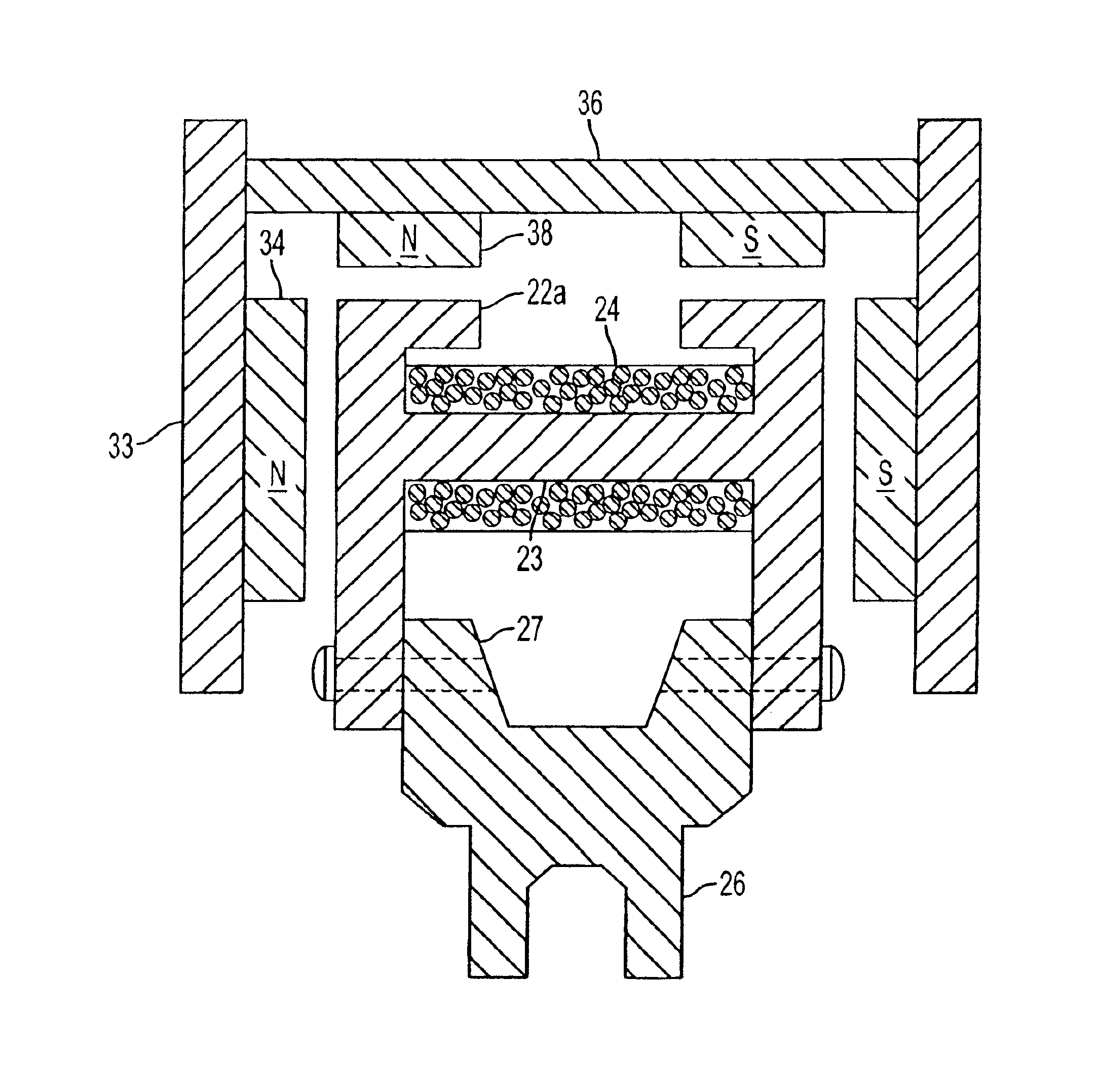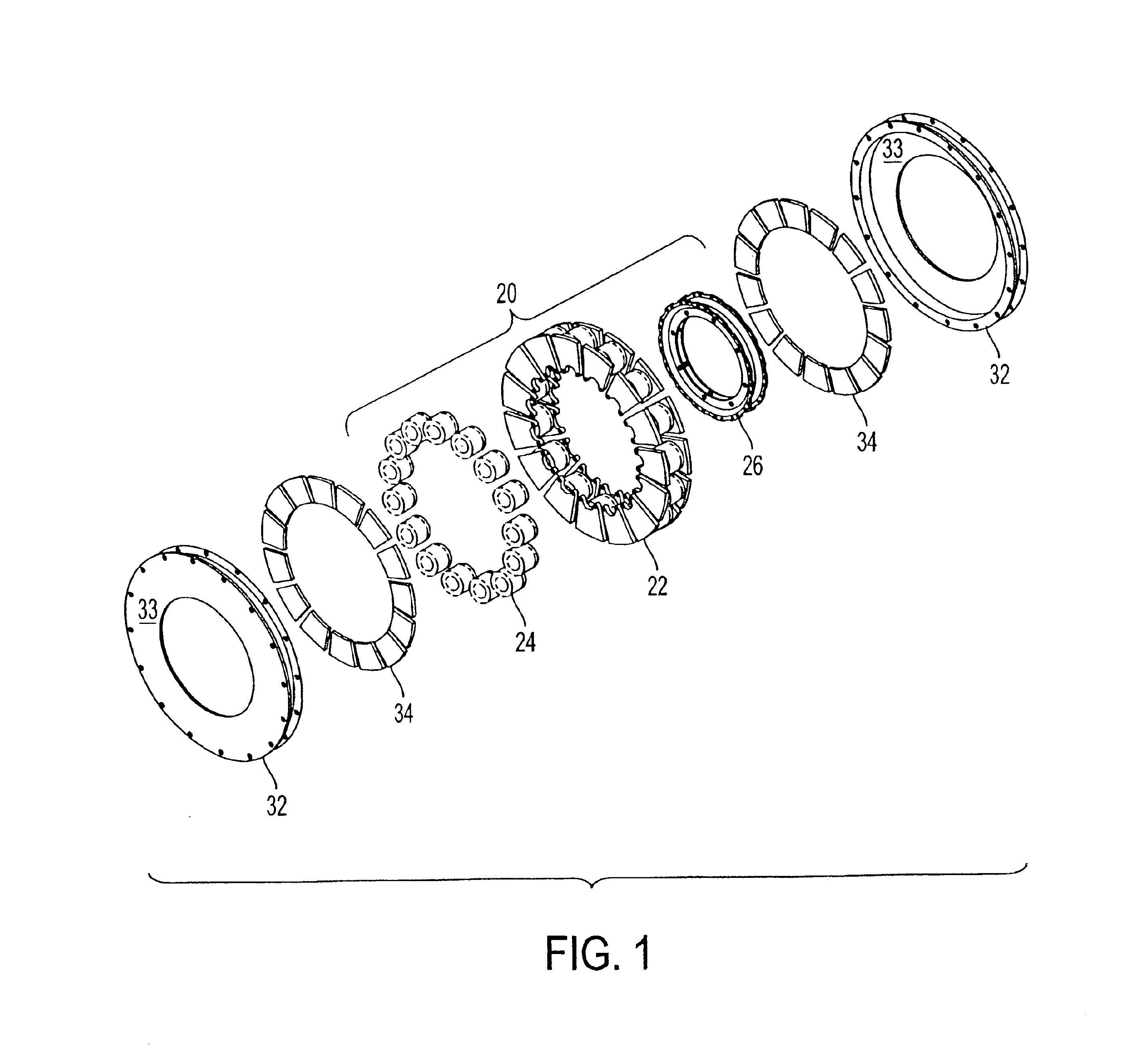Rotary electric motor having both radial and axial air gap flux paths between stator and rotor segments
a technology of rotary electric motors and air gap flux paths, which is applied in the direction of dynamo-electric machines, magnetic circuit rotating parts, and shape/form/construction of magnetic circuits, to achieve the effects of low flux loss, high torque capability, and optimized magnetic potential gradien
- Summary
- Abstract
- Description
- Claims
- Application Information
AI Technical Summary
Benefits of technology
Problems solved by technology
Method used
Image
Examples
Embodiment Construction
[0025]FIG. 1 is a three-dimensional exploded view illustrating components of the invention. The components in combination form the assembled motor construction illustrated in FIG. 2. For simplicity of explanation, elements that are not necessary for understanding the present invention have not been illustrated. Reference is made to the aforementioned copending applications for a more detailed description of such features. The elements indicated by bracket 20, when assembled, form a stator annular ring that is centered about an axis of rotation. The stator ring comprises a plurality of ferromagnetically isolated electromagnets having core portions 22 upon which are to be formed windings 24. Non-ferromagnetic ring 26 is a support structure for the individual electromagnets. A more detailed illustration of the stator ring construction is provided in FIG. 4. End portions 32 and permanent magnets 34, when assembled, form an annular ring centered about the axis of rotation and at least pa...
PUM
 Login to View More
Login to View More Abstract
Description
Claims
Application Information
 Login to View More
Login to View More - R&D
- Intellectual Property
- Life Sciences
- Materials
- Tech Scout
- Unparalleled Data Quality
- Higher Quality Content
- 60% Fewer Hallucinations
Browse by: Latest US Patents, China's latest patents, Technical Efficacy Thesaurus, Application Domain, Technology Topic, Popular Technical Reports.
© 2025 PatSnap. All rights reserved.Legal|Privacy policy|Modern Slavery Act Transparency Statement|Sitemap|About US| Contact US: help@patsnap.com



